
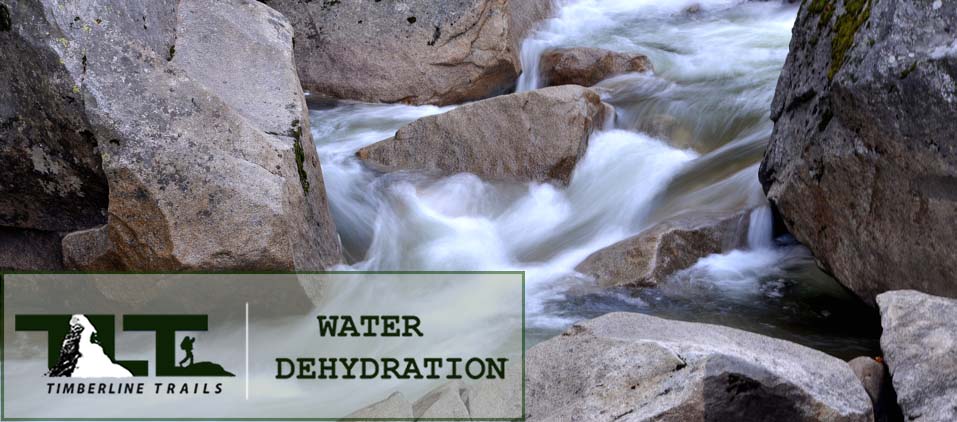 WATER, next to oxygen, is the most important substance that our body needs. Water makes up 60% of our body weight, and blood is normally about 94 percent water when the body is fully hydrated. Now I am pretty sure that this is no surprise to any of you out there, but I can't tell you how many times I have been out backpacking, hiking or mountaineering with folks that just don't give proper hydration the attention that it deserves.
WATER, next to oxygen, is the most important substance that our body needs. Water makes up 60% of our body weight, and blood is normally about 94 percent water when the body is fully hydrated. Now I am pretty sure that this is no surprise to any of you out there, but I can't tell you how many times I have been out backpacking, hiking or mountaineering with folks that just don't give proper hydration the attention that it deserves.So to get started on the subject, here are a few facts about the importance of water:
A) Water increases the efficiency of red blood cells in collecting oxygen in the lungs. In other words, we need it for breathing. I don't know about you, but for me, I run out of breath in the mountains far before my legs give out.
B) Water is used to energize and top off the reserves in the cells, and then leaves the body carrying along with it the toxic waste of the cells through urination, sweat, bowel movements, and even our breath.
C) Water is the main solvent for all foods, vitamins, and minerals. It is used in the breakdown of food into smaller particles, so we can metabolize and assimilate nutrients.
D) Water is essential for our body's cooling (sweat) and heating systems. Believe me, I know this from personal experience! When it is hot out there and I am working hard carrying my loaded pack up a steep ravine (or even on a slightly upward path) my energy level drops dramatically if I am not well hydrated. It has been said that if you get down just a pint of water when working hard hiking or any other physical activity, you lose as much as 25% of your strength!
E) Water is even used in the spinal discs to make them shock-absorbing water cushions and is the main lubricant in the joint spaces. Water helps prevent arthritis and back pain. Not much to say here. Now there are many reasons why our joints break down, but knowing this fact should encourage us to keep hydrated so we can do all we can to help keep our back and joints in the best working condition as possible. Painful knees and back can interfere with our mountaineering pleasure.
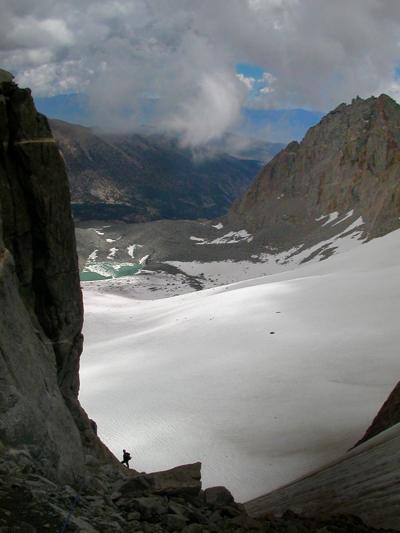 FACTORS THAT INFLUENCE WATER NEEDS:
FACTORS THAT INFLUENCE WATER NEEDS:Did you know that temperature, activity level, humidity, how much you sweat, breathing, urine, bowel movements, your physical condition, and even your gender (just to name a few), come into play when it comes to how much water you are going to lose on any given outing. Now lets discuss some other variables that you may encounter out there while hiking, climbing and mountaineering.
ALTITUDE: High elevation affects the hiker/climber in three ways when it comes to hydration:
1) Loss of water due to dryer air:
As you go higher, the temperature drops, and cold air holds less moisture then warm air.
2) Loss of water due to more frequent urination:
As the body acclimates to higher altitude (for most this means an altitude greater then 8,200 feet), one urinates more often as the body works to avoid respiratory alkalosis (elevated blood PH) by your kidneys excretion of bicarbonate. In time, the body adjusts and alkalosis is no longer a problem once the hiker/climber becomes acclimated. Also, in very cold temperatures, the body wants to eliminate fluid by urination so it does not have to expend energy heating it. So we are more likely to lose fluid through urination in cold weather.
3) Loss of water through rapid breathing (and increased heart rate):
This is due to lower oxygen concentration at higher altitudes. The body tries to compensate by taking in oxygen more frequently by breathing rapidly. Over time as the red blood cell density increases, breathing and heart rates return to normal.
FYI -To become fully acclimated to high altitude takes a lot of time:
The length of full hematological adaptation can be approximated by multiplying the altitude in kilometers by 11.4 days. For example, to adapt to (13,000 ft) of altitude would require 45.6 days. As you can see, this is far more time than the average hiker/climber has for going on a normal outing into the wilderness. So the bottom line is we need to drink a lot more when going into alpine regions. CLIMATE:
Hot or humid weather can make you sweat. That's because when the air is humid, sweat can't evaporate and cool you as quickly as it normally does. This can result in higher body temperature and the need for more fluids. Conversely in cold climates there is less moisture in the air requiring additional intake of fluid to replace fluid loss.
LEVEL OF ACTIVITY:
Speed of activity, grade, difficulty of terrain, and the amount of weight carried, all have an influence on how much water you will need. It is obvious (to most everyone) that the pace of the activity and the amount of weight carried has a direct impact on the energy and water needed for the outing. However, not always so obvious is how much extra work it is to ascend even a slight hill in comparison to traveling on level terrain. I learned this principle years ago when I did a lot of cycling, and it proves to be true for hiking too. The difficulty of the terrain also has a profound influence, especially if you get into an area where you are forced to scramble across very rocky terrain and have to make use of your hands and upper body for balance. The rule of thumb is, the more muscle groups that you use, the more energy and thus water you will need. So the bottom line is that you will need extra water if you are traveling fast, or in steep and/or difficult terrain.
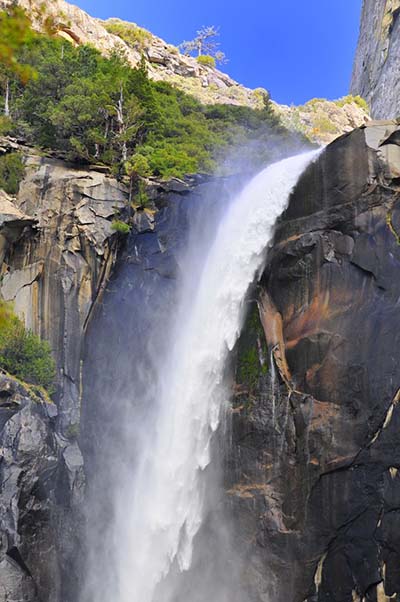 SO HOW MUCH WATER DO I NEED:
SO HOW MUCH WATER DO I NEED:I hear it all the time; "just drink 8 ounces of water 8 times a day, and you'll be fine." Right? Well that all depends on all the water loss factors we talked about earlier.
So lets get started with a couple of basic facts:
A) Women require 9 eight oz cups of water/day on average
B) Men require 13 eight oz cups of water/ day on average Let me start off and say that individuals sweat and breath at different rates and there is no way to have a hard and fast rule for everyone.
(the above is the findings of the Institute of Medicine)
If you engage in any activity that makes you sweat, you will need to drink extra water to compensate for the fluid loss. An extra 1.5 to 2.5 cups of water should suffice for short bouts of exertion. If the level of activity becomes intense, lasting more than an hour (such as hiking on a sustained uphill grade), then this will require more fluid intake. How much additional fluid you need will depend on water loss during the outing. If you start your outdoor activity well hydrated then it is recommended to drink 8 ounces every half hour of sustained activity followed by 8-16 ounces of water after the outing. It is up to you how you want to accomplish this. Some people prefer taking a break every half hour or so and drinking a pint of water. Others, such as myself, prefer to drink as they go.
One rule of thumb to remember is that the longer you exercise, the more difficult it is to stay hydrated. For those of you who are going out for a period of a few days, our fluid debt increases with time; be mindful that you need to replace the fluid you lose on a daily basis, as dehydration is cumulative.
FYI -It is possible to over-hydrate, but this is rare. For instance, it can be a problem with marathon runners who mistakenly over hydrate in an effort to maintain a high performance level. Over-hydration causes electrolytes such as sodium and potassium to become diluted to dangerous levels. Sports drinks can help a bit, but only to a certain point. Remember that sports drinks have added sugar or artificial sweeteners, which can cause you to crash sooner.
WARM vs COLD WATER:This factor may be of more interest for the mountaineer and high altitude hiker. Cold water is much more satisfying when hiking in warmer climates, but when conditions are cold, it can be a problem. This is because it takes extra calories to heat up the water you just drank, and calories are hard to come by at high altitude since it is more difficult to eat.
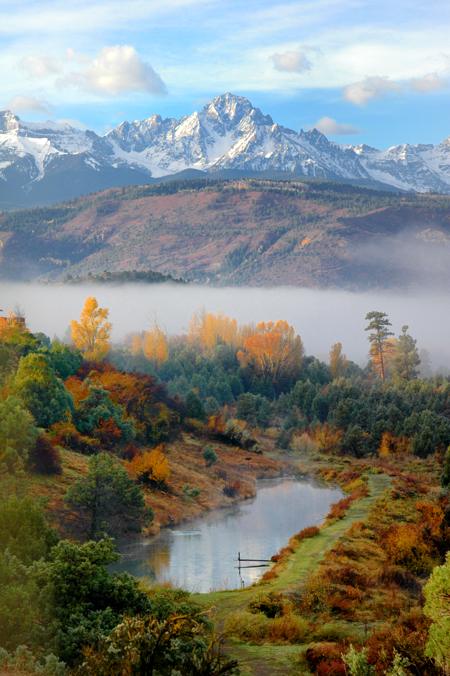 SOURCES AND TREATMENT OF WATER: Food can supply up to 20% of your water intake. For example many fruits and vegetables are made up of 90% water by weight. The other 80% must come from drinking.
SOURCES AND TREATMENT OF WATER: Food can supply up to 20% of your water intake. For example many fruits and vegetables are made up of 90% water by weight. The other 80% must come from drinking.Filtered water is the best choice for safe drinking.
For extended hikes, when carrying your entire water supply is unreasonable, or clean water is not available, it is important to disinfect the water source. There are many potential health risks for ingesting water contaminated with protozoa, bacteria, and viruses. Symptoms of ingesting water contaminated with protozoa and bacteria can include diarrhea, vomiting and abdominal cramps....with viruses, add hepatitis and meningitis. These contaminates are from human and animal feces found in streams and lakes.
You could boil the water, use an iodine pill (do not use iodine if you are pregnant, have thyroid problems, or are hypersensitive to iodine), chlorine pill, or you can filter it. Boiling (rolling boil for 1 minute) is effective for killing all three types of contaminates. At altitudes greater than 6,000 feet water should boil for at least 3 minutes.
If you do not boil your water then you will need to filter it or use a combination of filter and disinfectant. Treatment for different types of contaminants:
a) Protozoa - A combination of filter and disinfectant is best to eliminate protozoa, however, filtration alone can also work for this type of contaminate (use a filter that can remove particles down to 0.3 microns).
b) Bacteria - A combination of filter and disinfectant is best to eliminate bacteria.
c) Viruses - Disinfect with iodine or chlorine. Filtration does not work for viruses.
NOTE: Most outdoor outfitters carry all of the above purification equipment and disinfectant.
DEHYDRATION:
When engaged in any outdoor activity, dehydration must be a consideration. Anyone can become dehydrated if fluid loss is greater than fluid intake. It's as simple as that! Of special consideration are young children (due to their lower body weight), older adults (because after 50 our thirst sensation diminishes and continues diminishing with age), and those with chronic illnesses. Dehydration is a whole separate topic for thought, but we will address the subject as it relates to the following topics: Prevention, Symptoms, and Solutions as they relate to activities such as, mountaineering, hiking, and backpacking.
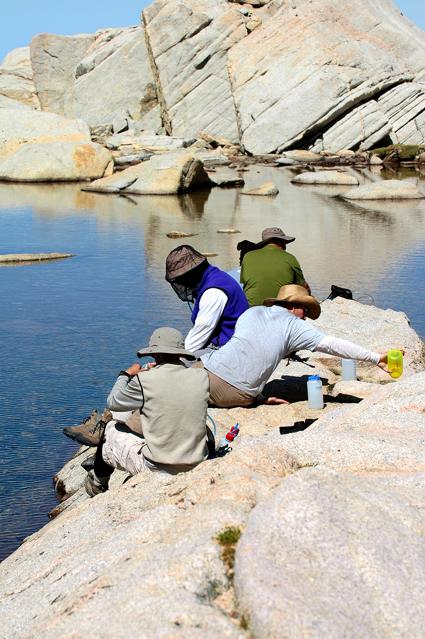 PREVENTION:
PREVENTION:The best way to prevent dehydration, for the most part, is to drink when you are thirsty. I say for the most part, because there are times when thirst alone will not do the trick. This is true if you are past the age of fifty. Older folks need to try and schedule fluid intake based on activity level, because their thirst is not always a reliable indicator. Urine color is actually the best way to monitor fluid intake. If it is light or clear, you are most likely OK. The other exception we will discuss next.
When it comes to activities that involve sustained strenuous activity (such as mountain climbing and backpacking), it may not be possible to drink enough. This is because the water losses are often times greater than the body's ability to absorb water. This is because the longer you exercise, the more difficult it is to stay hydrated. Over hours and days of exercise ones fluid debt becomes cumulative. This problem can become extreme for mountaineers who also have to fight the altitude factor as their bodies try and adjust to higher elevations through increased urination and more rapid breathing. In these situations, it is wise to pre and post hydrate. This means that not only should you be continuously drinking during the activity, but that you should drink as much as possible before the after the outing.
In order to avoid extreme dehydration when on extended mountain climbs and backpacks it is smart to take more breaks and gain altitude slowly. This will also help with altitude sickness. Next, if you find yourself breathing at a particularly rapid rate you need to slow the pace, and if you are sweating more than usual, you need to stop and remove clothing. I know from experience that when I start off in the cool of the morning it won't be long before I heat up and need to stop and make clothing adjustments. I hate having to take the time to remove my backpack and make the adjustments, but it is well worth it. Remember, fluid loss always leads to energy loss, therefore, try and maximizing your fluid intake and minimizing your fluid loss. This way you can perform at maximum efficiency.
Another great way to avoid dehydration and stay hydrated (if you are in a very hot climate) is to hike at night. We employ this method if we have a nice well marked trail to hike on, and everyone has a fully charged headlamp. I can't tell you how many miserable hot dry miles we have avoided by traveling in the cool of the night!
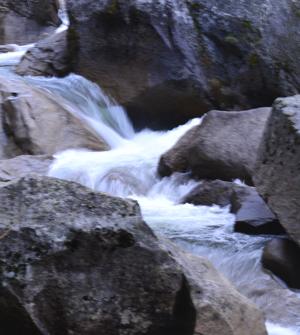 SYMPTOMS:
SYMPTOMS:With mild to moderate dehydration you may experience:
Severe dehydration is a medical emergency and you should seek medical attention as soon as possible if you are experiencing symptoms such as follows:
SOLUTIONS:
The best solution for dehydration is prevention, but if you find yourself in a state where you have become dehydrated, the next best thing is to start the process of taking on more fluids. Other solutions are similar to those things we talked about under the prevention heading. Seeking shade and removing excess clothing in hot weather, slowing the pace, taking more breaks, or setting up camp early, downing a flavored drink, and so on can all help, but if you find yourself having symptoms such as those listed under extreme dehydration you need to cut your trip short and get medical attention.
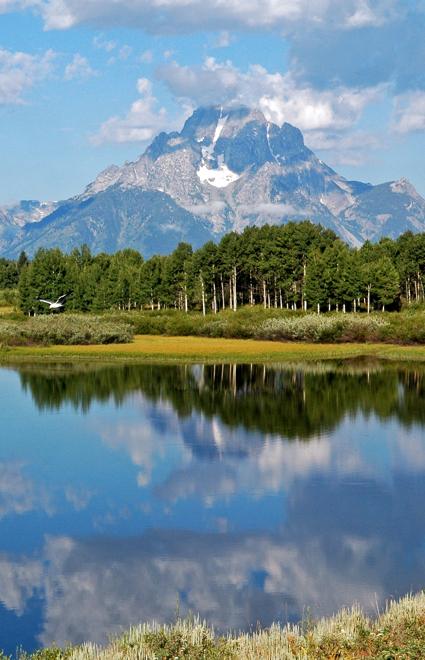 PERSONAL EXPERIENCE:
PERSONAL EXPERIENCE:I have found over the years that keeping well hydrated is an incredible challenge, especially when I am out there backpacking and mountaineering. This is because there is so much against you when you are engaged in such rigorous activities as mentioned above. There have been times, while mountaineering for several days, that I have come back home only to find that I have lost as much as 8 pounds of water weight on the outing. One time I came back so dehydrated that I even got a blood clot! Needless to say, you do not need that. High altitude is such a problem because it is usually so nice and cool (or downright cold) up there, and you don't think you need to drink as much, when in reality you need more than ever because the air at high altitude holds so little moisture.
Over time, I have found that the best way to stay hydrated in the wilderness, is to use a device such as a camelback (a drinking apparatus made up of a water bladder and tube). Drinking little by little works well, because if you wait until you are real thirsty it becomes very difficult to make up for the water you have lost. Secondly, the body needs time to assimilate water. If you try to take in a couple of quarts of water in one sitting, more often than not, you just end up peeing half of it out in a short period of time rather than utilizing it. I think water bottles are a little tougher to use than a camelback, because you have to stop to get them out of your backpack in order to drink. Having a tube hanging right in front of you makes it far easier to keep hydrated in my opinion. However, I usually do carry water bottles but I keep them empty while on the move, and only fill them at camp. Water bottles are a must if you want to add powdered or liquid flavor to your drink. You do not want to put anything but pure water in your camelback (or other such similar device) because it will breed bacteria over time, and it is very difficult to clean the bladder.
When going on trips that involve conditions where you just have snow, ice, and no running water (such as Mt Rainier or Mt Shasta in early spring), you need to carry extra fuel and a bigger pot for melting down the snow and ice. This can be very time consuming but it is vital. Not having enough fuel for this purpose has put many a climber in a life threatening situation. It doesn't take long (say you get pinned down in a storm for a few days) to get severely dehydrated if you have no fuel for melting down snow and ice. Also, on trips lasting more than a day, make sure you have some sort of purification system as mentioned above. I use a filter and it works great for me. That way no matter where I am (if I find a water source), I can refill my camelback and water bottles. This is not always common knowledge, because I did have an incident where I went with a guy on a mountain trip that thought he had to carry all his drinking water going in. After a couple of miles of up hill travel he nearly collapsed with all the water weight that he was carrying in his pack.
Finally, if you are subject to altitude sickness, water can be a real help in keeping the pain level down. I know this from extensive experience. Altitude sickness gets worse when laying down during the night and water helps here also. The only bad part is that it makes you get up more often to pee.
Well, that's about it for water and outdoor activities. Just know that water is the best pick-me-up in the world, and no other beverage can take its place. So drink up so that you can keep your performance at peak levels. DEEPER INSIGHT:
After reading all the above, it never ceases to amaze me of how intricate and highly functional the human body is. It seems to have a highly developed computer that compensates beautifully for all types of stresses and strains we put on it on a daily basis. It knows just what is needed minute by minute and then adjusts for our survival and comfort. This brings to mind the following verse:
I praise you because I am fearfully and wonderfully made; your works are wonderful, I know that full well. Ps 139:14 Email Sign Up

| Join the Adventure! Sign up here for Timberline Trails Monthly Newsletter |

Join us on Instagram

©2006-2024 TimberlineTrails. All Rights Reserved.
....